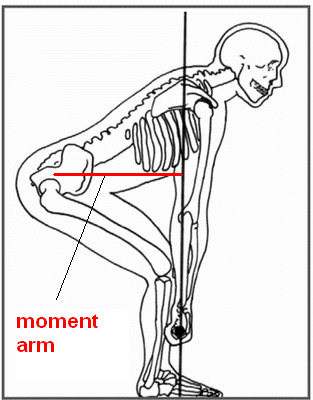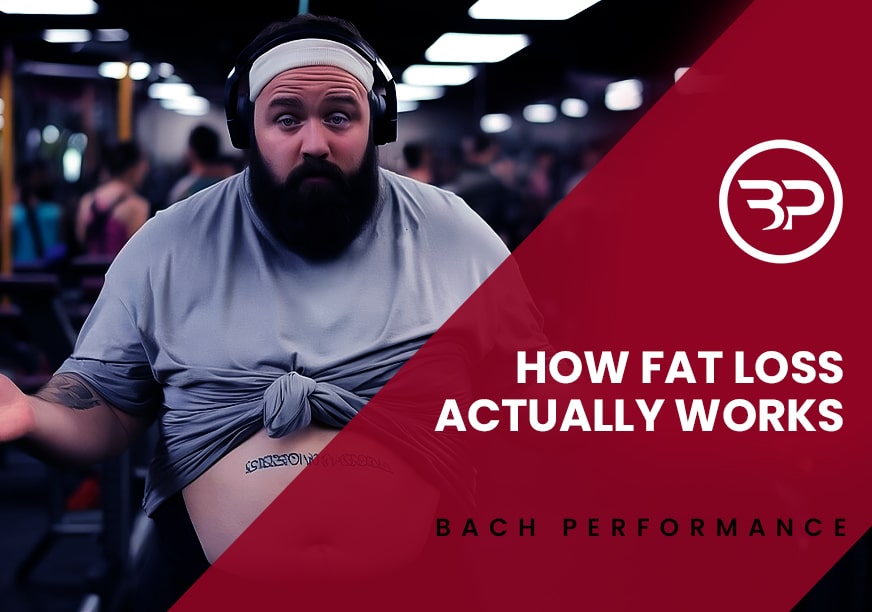Three strategies to Overcome the Sticking Point in Any Lift
September 23, 2014
Today’s guest post is a special treat from one of the smartest young coaches and writers around in Justin Kompf. Justin and I have crossed paths multiple times on the interwebz and I’m happy to say he’s well on his way to becoming one of the top coaches anywhere. Enough of my man crush, it’s time to get to one of the most frustrating parts of training: Sticking Points.
You know the situation: You’re halfway up on the bench press and the bar just stops. You panic and you’re stuck until your spotter peels the bar off of your chest. You roll off the bench and hide in the corner. Embarrassed, annoyed and pissed that you can’t get over the hump.
Yea, I’ve been there too. Sticking points are no fun. Luckily, Justin’s got the experience and science to show you how to conquer your sticking point and reach higher levels of training in the gym. Get ready, Justin covers everything in great depth.
Three Strategies to Overcome the Sticking Point in Any Lift
I don’t encourage any lifter to miss a lift, but these things happen when going for a personal record. Recently I attempted to pull 570, missing the lift right above knee level. In any lift, the sticking point is the region where bar velocity slows to a minimum. It is the place where most lifts are missed and usually (not always) if the sticking point is overcome the lift will be completed. So why does the sticking point occur?
In order to understand this we have to understand what strength is and how it is expressed. To quote Dr. Yuri Verkhoshansky:
“Strength is a product of muscular action initiated and orchestrated by electrical processes in the nervous system of the body. Classically, strength is defined as the ability of a given muscle or group of muscles to generate muscular force under specific conditions.” (Verkhoshansky 1). There’s going to be so many factors that contribute to strength expression, motor unit firing rate and recruitment, anthropometrics (limb length, body weight) and muscle cross sectional area but for talking about sticking points we’re going to examine torque.
Torque Explained
Torque describes a muscles action or strength and is defined as force x moment arm
T= force x moment arm
Torque can be internal, which describes the muscle torque, or external which describes the external loads torque. Larger internal moment arms are good because it means the muscle can produce more torque, larger external moment arms are not favorable because it means that the muscles have to produce more force to overcome the load. We can think of it like this, we have the force of a muscle (Fm), the muscle moment arm (Mm), the force of the resistance (Fr) and the external moment arm of the resistance (Mr).
If Fm x Mm < Fr x Mr then the weight will not move, if Fm x Mm > Fr x Mr then the weight will move.
Overcoming Deadlift Sticking Points
During a lift moment arms and force producing capabilities change. Let’s take the deadlift for example and examine what happens to internal moment arms of the hip extensor muscles. The hamstrings, adductor magnus, and gluteus maximus are the main hip extensors. The hamstring muscles moment arm increases then decreases with decreasing hip flexion (returning to anatomical position). The adductor magnus moment arm decreases with decreased hip flexion and the gluteus maximus moment arm increases with decreases hip flexion.
The sticking region could be the point where the internal muscle moment arms are at a mechanical disadvantage. But, torque also has to encompass force production. Because of this, we need to look at force production changes during a lift as well to explain sticking points.
Length-tension relationships dictate that muscles are strongest at two points, an optimal point and a point where the muscle is lengthened beyond its resting point. As a muscle shortens it loses its ability to generate force. Also as a muscle is stretched past its resting length, non-contractile components of the muscle (tendons, titin proteins, and connective tissue sheaths) contribute to force production. These non-contractile elements want to recoil and return to resting lengths. This may explain why at maximal loads on the deadlift lifters tend to extend at their knees and lean forward going into further hip flexion. The lengthening of the hamstrings may help recruit some of these non-contractile components.
So, sticking with the deadlift, we have changes in muscle moment arms favoring the gluteus maximus towards the lockout portion, somewhat unchanging for the hamstrings, and decreasing adductor magnus moment arms towards the lockout. To summarize:
- Decreasing moment arm for the adductor magnus = disadvantage
- Relatively unchanging moment arm for the hamstring = neutral
- Increasing gluteus maximus moment arm = advantage
Because the gluteus maximus and adductor magnus are hip extensors they shorten in length as they approach full extension. The hamstrings are a bi-articular joint, meaning they extend at the hips but also flex at the knees. Since the deadlift is hip extension with knee extension there isn’t much of a change in muscle length (the hamstrings are slightly stretched though during hip flexion even if the knees are flexed too). To summarize:
- Decreased muscle length beyond the optimal point for the gluteus maximus and adductor magnus
- Relatively unchanging length for the hamstring muscles
Before going into solutions on how to break past the sticking point let’s look at some proposed reasons from research on as to why the sticking region occurs.
Elliot et al. examined the sticking region for the bench press in 10 elite male powerlifters. They found that when 100% of their maximums were attempted minimum bar velocity occurred at 47.9% of the distance of the complete lift. They noticed that external moment arms decreased from the beginning to the end of the sticking point for the elbow and the shoulder. The authors proposed that the sticking region is caused by inefficient force production combined by the decrease in strain energy.
This essentially means that the sticking region is the portion of the lift between where passive elastic contractile components run out and active muscular contractions must take place. The series elastic component (SEC) of the muscle stores strain energy. When a muscle undergoes active contraction it is the SEC that is put under tension. The SEC is comprised of the tendons, cross-bridges, myofilaments, titin filaments and Z-disc. This strain energy may result in increased force production during the beginning of the lift but quickly dissipates.
Unlike the squat or the bench press, the sticking point in the deadlift would be hard to explain by the dissipation of strain energy because in competition there is no eccentric or lowering portion during which strain energy could be stored by the SEC. So once again to summarize why the sticking region may occur:
- Decreased force production because of length tension relationships
- Decreased muscle moment arms
- Running out of stored elastic energy (not applicable to the deadlift)
So how does one break through these sticking points? Well, there may be three solutions which include (1) specific strengthening of muscles that are under the most load at the sticking point (2) partial range of motion training where the sticking point is and (3) training to increase acceleration prior to the sticking region.
Specific Strengthening to Overcome the Sticking Point
This can be done through accessory work. For example, maybe the glutes or adductor magnus are the limiting factor in hip extension during the lockout of the deadlift. You may want to incorporate hip bridges into your training.
Training Partial Range of Motion:
If you’re missing the deadlift at the knees or the bench press several inches above your chest you may want to add some partial range of motion training. I wouldn’t recommend deadlifting above knee level. In my opinion, it wouldn’t carry over as much as starting below knee level because it’s more of knee extension with a much more upright torso than you would have in a max pull so you’re not really training the erectors as much as would be needed.
Dynamic Speed Training
A final strategy would be to increase bar speed prior to the sticking point. This increased velocity may offset the decreased force production at the sticking point region. The momentum gained during this period would help the lifter burst through the sticking region. An example of this would be a squatting, deadlifting, or benching with submaximal weights (65-75% 1RM) with maximum speed.
Bio: Justin Kompf is the head strength coach and adjunct professor at the State University of New York at Cortland. He is a competitive powerlifter, competing in the 181 weight class and the captain of a powerlifting team whose members hold several NY state records. Justin is pursuing his masters in exercise science and can be contacted at Justin.kompf90@gmail.com for coaching and questions.
References
(1) Arandjelovic O. Optimal effort investment for overcoming the weakest point: new insights from a computational model of neuromuscular adaptation. Eur J Appl Physiol 111: 1715-1723, 2011.
(2) Beardsley C ., & Contreras B. (2012) Hip extension torque: The scientific guide to the posterior chain.
(3) Coburn, Jared, and Malek Moh. “Biomecanics.” NSCA’s Essentials of Personal Training. Ed. 2. Champaign, IL: Human Kinetics, 2004. 58. Print.
(4) Elliot BC, Wilson GW, and Kerr GK. Biomechanical analysis of the sticking region in the bench press. Med Sci Sports Exerc 21: 450-462, 1989.
(5) Escamilla RF, Francisco AC, Fleisig GS, Barrentine SW, Welch CM, Kayes AV, Speer KP and Andrews JR. A three-dimensional biomechanical analysis of sumo and conventional style deadlifts. Med Sci Sports Exerc 32: 1265-1275, 2000.
(6) Nemeth G and Ohlsen H. In vivo moment arm lengths for the hip extensor muscles at different angles of hip flexion. J Biomechanics 18: 129-140, 1985.
(7) Verkhoshanksy, Yuri Vitalievitch, and Mel Cunningham. Siff. Supertraining. Rome, Italy: Verkoshanksy, 2009. Print.









